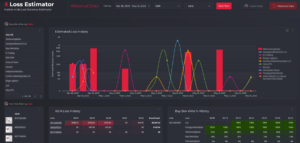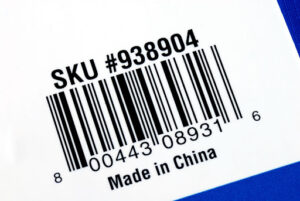Brand protection refers to the strategies and actions implemented by businesses to safeguard their brand’s reputation, intellectual property, and customer trust. This involves identifying and addressing various threats, such as counterfeit products, unauthorized sellers, and trademark infringements. In today’s highly competitive online marketplace, having a robust brand protection strategy is essential for maintaining a strong brand image and ensuring the long-term success of your business.
Amazon is one of the world’s largest e-commerce platforms, boasting over 300 million active customers and millions of third-party sellers. While this vast marketplace offers enormous opportunities for businesses, it also comes with unique challenges, including the risk of counterfeit products, unauthorized sellers, and intellectual property infringements. Brand protection is crucial on Amazon to:
– Maintain customer trust and loyalty by ensuring they receive authentic, high-quality products.
– Preserve your brand’s reputation by preventing negative reviews and customer complaints stemming from counterfeit products.
– Protect your intellectual property rights, including trademarks, copyrights, and patents.
– Avoid potential legal issues and financial losses associated with counterfeits and infringements.
Brand protection on Amazon
Businesses can choose to adopt a proactive or reactive approach, depending on their unique needs and resources. A proactive approach focuses on implementing preventive measures to minimize the risk of brand infringements, while a reactive approach involves responding to and addressing issues as they arise. In this blog post, we will delve into the key aspects of proactive and reactive brand protection, discussing their benefits, strategies, and how to determine which approach is right for your business on Amazon.
Proactive brand protection involves taking preemptive steps to identify potential risks and implement measures to prevent issues before they occur. This approach requires continuous monitoring and planning to mitigate threats, such as counterfeiting, unauthorized sellers, and intellectual property infringements on Amazon.
Benefits of a proactive approach to Amazon Brand Management
Preventing counterfeit products: By implementing proactive measures, businesses can significantly reduce the likelihood of counterfeit products infiltrating the market. This helps maintain product quality and ensures customers receive genuine products, ultimately contributing to increased customer satisfaction and loyalty.
Maintaining brand reputation and customer trust: Proactively protecting your brand on Amazon helps maintain a positive brand image and customer trust. When customers can confidently purchase authentic products, they are more likely to become repeat buyers and recommend your brand to others.
Minimizing legal risks and costs: Proactively addressing potential brand infringements can help prevent costly legal disputes and potential financial losses. By protecting your brand from counterfeits and unauthorized sellers, you can also reduce the risk of being held liable for issues caused by substandard products.
Proactive brand protection strategies
Amazon Brand Registry enrollment: Enrolling in Amazon Brand Registry provides businesses with access to a suite of tools to protect their brand, such as advanced search and reporting features. This program also enables businesses to report violations and take advantage of Amazon’s proactive brand protection measures.
Intellectual property protection: Registering trademarks, copyrights, and patents helps establish and protect your brand’s intellectual property rights. This not only deters potential infringers but also provides legal recourse in case of disputes.
Product serialization and authentication: Implementing unique product identifiers, such as barcodes or QR codes, can help track and authenticate products throughout the supply chain. This makes it more difficult for counterfeiters to produce and distribute fake products and enables customers to verify the authenticity of their purchases.
Monitoring and enforcement: Regularly monitoring your product listings and the Amazon marketplace for potential infringements is crucial for proactive brand protection. Establishing a system for detecting and reporting violations, as well as taking swift action to address them, can help prevent long-term damage to your brand.
Admittedly, a proactive approach is a great start but it is well known that Amazon does a rather poor job of educating brands on how best to navigate the Brand Registry portal. Oftentimes our clients come to us and just assume that when they ‘register their brand’ that the enforcement is done for them by Amazon. Unfortunately this could not be further from the truth. The onus is on the brand to not only register but to enforce all of the brand’s IP as well. Brand Registry is a valuable resource but it is a tool and unless you are well versed in using that tool it may give a false sense of confidence. This is one of the most common issues we hear at AMZ Watchdog. Brands will tell us that they signed up for Brand Registry but unauthorized sellers, counterfeits or multiple patent infringers still flood the marketplace. That’s where we usually start with our new clients.
Reactive Brand Protection
Reactive brand protection involves addressing and resolving brand infringements after they have occurred. This approach primarily focuses on identifying issues through regular monitoring and taking appropriate action to rectify the situation. While it may not prevent all instances of counterfeiting or unauthorized selling, a reactive strategy can help minimize the impact of these issues on your business.
Swift response to infringements: Reactive brand protection enables businesses to respond quickly to infringements as they arise. By actively addressing issues, businesses can minimize the damage caused by counterfeit products or unauthorized sellers and maintain customer trust.
Cost-effective for smaller businesses: For businesses with limited resources, a reactive approach can be more cost-effective than implementing comprehensive proactive measures. Small businesses can prioritize monitoring and enforcement efforts to address infringements without investing in extensive preventive measures.
Reactive brand protection strategies
Regularly reviewing customer feedback and reviews: Monitoring customer feedback and product reviews on Amazon can help identify potential issues with counterfeit products or unauthorized sellers. Negative reviews or recurring complaints about product quality or authenticity may signal a need for further investigation and action.
Investigating and addressing infringements: When a potential infringement is identified, businesses should conduct a thorough investigation to determine the extent of the issue. This may involve verifying the authenticity of products, identifying unauthorized sellers, or assessing potential intellectual property violations. Once the issue is understood, businesses can take appropriate action to resolve it, such as reporting violations to Amazon or contacting the offending party directly.
Legal actions against counterfeiters: In some cases, legal action may be necessary to address counterfeit products or other brand infringements. This can include sending cease and desist letters, filing lawsuits, or working with law enforcement to pursue criminal charges against counterfeiters.
Case study: Successful reactive brand protection
To date one of the most successful campaigns that AMZ Watchdog has executed was for a US manufacturer of a pool float. The brand has a well-written utility patent that could be enforced on all US e-commerce platforms. When this brand came to us we were, quite literally, a last resort.
When the brand first launched the product they had 17 of the top 20 search results for their product. Very soon after launching their product was knocked off and a flood of copycats that were infringing on their patent entered the marketplace. They tried sending cease and desist letters but most of the sellers were from China so enforcement was nearly impossible. Amazon did little to nothing to help the situation.
This product is seasonal and sells much higher volumes in the summer months. The low estimates put the patent infringement losses at a little over $1MM per month and that had been happening for the last three years.
The brand ended up slowly consolidating their listings and dropping their price in response to the growing crush of sellers. By the time they came to us we were told “There is nothing you can do – we have tried everything. We have spent tens of thousands of dollars and our legal teams have tried everything.”
We like nothing more than a good challenge – so we set to work. In just four months AMZ Watchdog successfully removed 400 infringing sellers that were thought to be ‘impossible’ to remove. On just one ASIN (Amazon SKU), Q1 has seen a 286% increase in sales. The brand is set to see record breaking numbers by reactive brand protection with the help of AMZ Watchdog.
Choosing the right brand protection strategy is crucial for safeguarding your brand’s reputation, customer trust, and intellectual property rights on Amazon. Whether you opt for a proactive, reactive, or hybrid approach, it is essential to consider your business’s unique needs, resources, and risks. A well-executed brand protection strategy can help prevent counterfeits, unauthorized sellers, and other infringements, ultimately contributing to the long-term success of your business on Amazon.
Adapting your approach as your business grows and evolves
As your business grows and evolves, so too should your brand protection strategy. Regularly reassessing your approach and adapting it to your current needs and resources will help ensure that your brand remains protected. Expanding your strategy to incorporate new tools, technologies, or legal protections can further enhance your brand protection efforts on Amazon.
Encouragement to prioritize brand protection on Amazon
Prioritizing brand protection on Amazon is essential for maintaining your brand’s reputation, customer trust, and intellectual property rights. By investing time and resources into developing and implementing an effective brand protection strategy, you can help ensure the long-term success of your business on the platform. Don’t wait for issues to arise—take proactive steps to protect your brand and secure your business’s future on Amazon.




